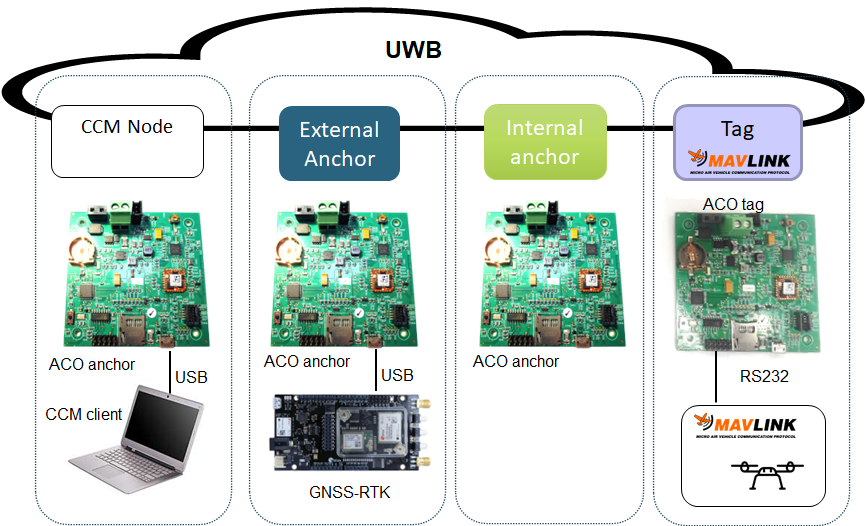WP6-IPS-MAF: Difference between revisions
| Line 2: | Line 2: | ||
ACORDE IPS was motivated by the specific positioning needs and requirements for a drone flying on an large indoor scenario. | ACORDE IPS was motivated by the specific positioning needs and requirements for a drone flying on an large indoor scenario. | ||
The need for considering different requirements, several aspects and levels of a | The need for considering different requirements, several aspects and levels of a Cyber-physical system (tunnel geometry, deployment of anchors, algorithms for 3D positioning, platform limitations, interfaces) made early evident that a more holistic, model-based design was necessary. | ||
It motivated the development of the IPS Modelling and Analysis Framework (IPS-MAF), which, as shown in the figure below, can be used from early design stage to build up a holistic model of the IPS system. IPS-MAF can be used to analyse and decide key aspect at different levels of system (deployment of the anchors, sensitivities and transmission powers, transmission frequencies, etc) while keeping a holistic view of the system. | It motivated the development of the IPS Modelling and Analysis Framework (IPS-MAF), which, as shown in the figure below, can be used from early design stage to build up a holistic model of the IPS system. IPS-MAF can be used to analyse and decide key aspect at different levels of system (deployment of the anchors, sensitivities and transmission powers, transmission frequencies, etc) while keeping a holistic view of the system. | ||
Revision as of 21:21, 13 October 2022
Introduction
ACORDE IPS was motivated by the specific positioning needs and requirements for a drone flying on an large indoor scenario. The need for considering different requirements, several aspects and levels of a Cyber-physical system (tunnel geometry, deployment of anchors, algorithms for 3D positioning, platform limitations, interfaces) made early evident that a more holistic, model-based design was necessary. It motivated the development of the IPS Modelling and Analysis Framework (IPS-MAF), which, as shown in the figure below, can be used from early design stage to build up a holistic model of the IPS system. IPS-MAF can be used to analyse and decide key aspect at different levels of system (deployment of the anchors, sensitivities and transmission powers, transmission frequencies, etc) while keeping a holistic view of the system.
That is, IPS-MAF enables a holistic model of the IPS, while integrating some actual pieces of the application, so in that sense it also enables to advance some part of the application development. Therefore IPS-MAF feeds the conventional platform development and embedded application development phases, where ACORDE has already long expertise. At the same time, the measurement and characterizations done for platform and application development serve to feedback and polish the holistic model. Summing up, an extended system-level design flow has been enabled, after coupling IPS-MAF to conventional ACORDE development processes for platform development (which includes PCB design, mechanical design, drivers’ development, embedded application development) and application development (where ACORDE typically develops in C/C++, relying on a GUI based (typically Eclipse), microcontroller specific cross-development environment.
